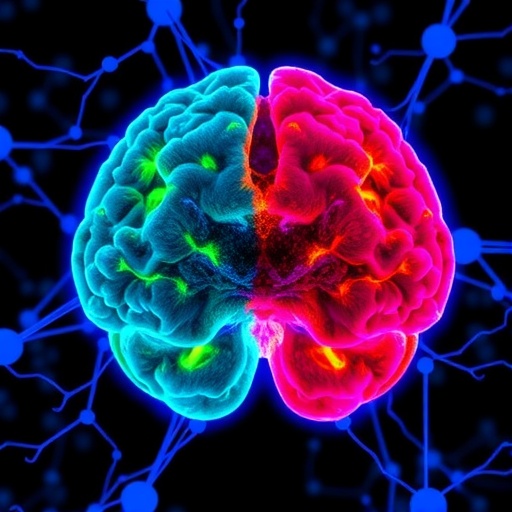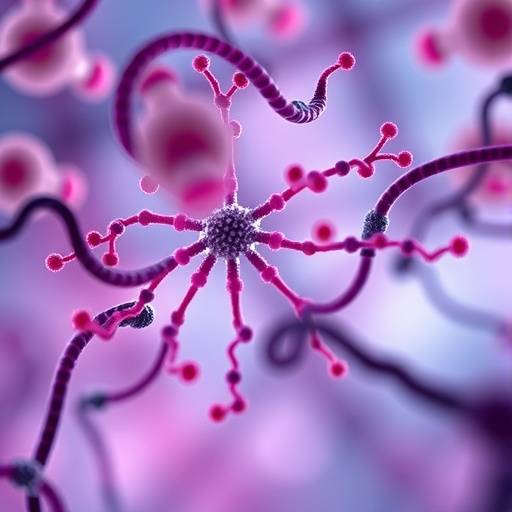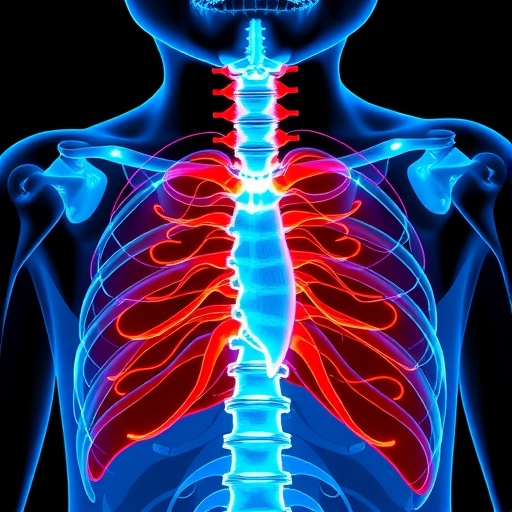Glioblastoma (GBM) remains one of the most formidable challenges in neuro-oncology, notorious for its aggressive progression and devastating prognosis. Despite multimodal standard therapies comprising surgical resection, radiotherapy, and temozolomide chemotherapy, median patient survival stubbornly lingers below two years. This dismal outlook underscores an urgent need for innovative therapeutics. Chimeric antigen receptor T-cell (CAR-T) therapy has revolutionized hematologic cancers, yet its translation to GBM has been fraught with difficulties. The intrinsic complexities of GBM biology—chiefly antigen heterogeneity and an immunosuppressive tumor microenvironment (TME)—have stymied the efficacy of CAR-T, calling for cutting-edge approaches to dismantle these barriers.
Intratumoral heterogeneity is a hallmark of GBM, manifesting as a dynamic mosaic of genetically and phenotypically distinct neoplastic cell populations within the same lesion. Molecular targets such as EGFRvIII, once considered promising, reveal an unsettlingly patchy expression across tumor cells. This heterogeneity fosters immune evasion; antigen-negative clones often dominate at recurrence after an initial response to CAR-T therapy. Moreover, glioma stem cells (GSCs)—a subpopulation endowed with self-renewal capacity and notorious for therapeutic resistance—express distinct surface markers, including CD133 and CD44, that evade singular targeting strategies. These GSCs modulate antigen presentation pathways and contribute actively to immune suppression, thus escaping monolithic CAR-T approaches designed against singular antigens.
Beyond cellular heterogeneity, the GBM microenvironment compounds therapeutic challenges by erecting an immunologically suppressive fortress. The blood-brain barrier and blood-tumor barrier impose a stringent physical blockade, severely limiting the infiltration of systemically delivered CAR-T cells into the parenchymal tumor bed. Immunologically, the TME is enriched with tumor-associated macrophages, or glioma-associated macrophages (GAMs), that secrete immunosuppressive cytokines like IL-10 and TGF-β. Regulatory T cells (Tregs) further dampen effector immune responses. Engagement of immune checkpoints such as PD-1/PD-L1 within the niche induces functional exhaustion of T cells, including CAR-Ts, crippling their cytotoxic potential. The accumulation of metabolic byproducts like lactate and adenosine adds another layer of immunosuppressive milieu, impeding CAR-T cell metabolism and function.
In light of these formidable barriers, the CAR-T field is experiencing a paradigm shift from monofocal direct tumor lysis to multidimensional immune reprogramming approaches. Scientists are engineering sophisticated next-generation CAR constructs incorporating multi-target recognition to preempt antigen escape. Tandem CARs simultaneously targeting two antigens such as CD44 and CD133 have demonstrated enhanced tumor coverage. More innovative logic-gated CARs embed computational circuits that can enforce AND, OR, or IF-THEN gating. For example, SynNotch receptors enable conditional CAR expression only upon dual antigen engagement, refining specificity, and sparing healthy off-target tissues.
Complementing targeting complexity, switchable and universal CAR platforms (UniCARs) offer unprecedented flexibility. These modular systems decouple antigen recognition from T-cell activation by utilizing soluble adaptor molecules that bind distinct antigens and channel the CAR-T response. This decoupling permits clinicians to dynamically retarget the same engineered T cells against emerging tumor antigen profiles, critical in a disease fraught with clonal evolution such as GBM.
Another promising avenue is the exploitation of innate immune receptors in CAR designs. NKG2D-based CAR-T cells recognize stress-induced ligand families like MICA and MICB, commonly upregulated on malignant cells, providing a broad-spectrum detection mechanism. This inherent promiscuity targets heterogeneous tumor populations more effectively than single antigen-targeted CARs, thus circumventing the challenge of antigenic loss variants.
However, engineering CAR-T specificity is only part of the solution. Tackling the GBM immunosuppressive environment requires synergy with adjunctive therapies. Immune checkpoint blockade with PD-1/PD-L1 inhibitors can rejuvenate CAR-T populations compromised by exhaustion pathways. Genetic ablation of PD-1 in CAR-T cells or expression of dominant-negative PD-1 receptors have enhanced efficacy in preclinical GBM models, reawakening CAR-T cytotoxic potential.
Additionally, cytokine armoring endows CAR-T cells with self-sustaining proliferative and survival signals amid the hostile TME. Engineering CAR-T cells to secrete or respond to cytokines such as IL-7, IL-15, and IL-21 promotes their expansion and persistence, fostering a stem-like memory phenotype that is crucial for durable anti-tumor immunity. This bioengineering approach counters the nutrient deprivation and hypoxia that typically limit T-cell fitness within GBM.
Traditional modalities like temozolomide chemotherapy and radiotherapy are being strategically integrated with CAR-T therapy to potentiate immune responses. Temozolomide, beyond DNA alkylation, can deplete regulatory T cells, thereby alleviating immunosuppression and enhancing CAR-T efficacy. Radiotherapy induces immunogenic cell death, releasing tumor-associated antigens and damage-associated molecular patterns that promote dendritic cell activation and facilitate CAR-T priming, contributing to durable anti-tumor responses.
Given the formidable blood-brain barriers, novel routes of CAR-T delivery are under active exploration to optimize therapeutic concentrations at the tumor site while reducing systemic toxicity. Intratumoral and intraventricular administration bypass these barriers, ensuring direct CAR-T cell presence within the TME. These localized approaches have demonstrated promising safety profiles and enhanced anti-tumor activity in early-phase clinical investigations.
The sophistication of these efforts is underpinned by cutting-edge preclinical modeling techniques. Patient-derived glioblastoma organoids (GBOs) faithfully recapitulate the tumor’s heterogeneous cellular architecture and immunosuppressive stroma, providing a high-fidelity platform to screen CAR-T cell efficacy and optimize therapeutic design. The advent of single-cell RNA sequencing further refines this process by uncovering complex antigen co-expression patterns, exhaustion states, and cellular interactions within the TME, guiding precision engineering of multi-target CAR constructs and combination strategies.
Ultimately, the future of CAR-T therapy in glioblastoma hinges upon a holistic and integrated approach. Rather than solely focusing on direct tumor cell eradication, the next generation of immunotherapies aspires to reprogram and remodel the GBM microenvironment itself. Their goal is to convert an immunologically “cold” and formidable fortress into a vulnerable target accessible to durable immune attack. By harnessing combinatorial antigen targeting, checkpoint inhibition, cytokine support, advanced delivery mechanisms, and sophisticated preclinical tools, researchers aim to unlock the long-elusive potential of CAR-T therapy against this devastating brain tumor.
The convergence of molecular engineering, immunology, and translational science heralds a new frontier in neuro-oncology. Precision, adaptability, and multifaceted immune engagement promise to reshape the treatment landscape for GBM and fulfill the hope for durable remissions in a disease long deemed incurable. With sustained innovation and clinical integration, this emerging paradigm could ultimately break the barrier between promise and cure in glioblastoma treatment.
Subject of Research: Glioblastoma and CAR-T cell immunotherapy
Article Title: Dual Challenges and Innovative Strategies in Chimeric Antigen Receptor T-cell Therapy for Glioblastoma
News Publication Date: 30-Jul-2025
Web References:
https://www.xiahepublishing.com/journal/oncoladv
http://dx.doi.org/10.14218/OnA.2025.00014
Keywords: Glioblastoma, CAR-T therapy, antigen heterogeneity, tumor microenvironment, immune suppression, glioma stem cells, immune checkpoint blockade, cytokine armoring, blood-brain barrier, patient-derived organoids, single-cell RNA sequencing, next-generation CAR engineering
Tags: Antigen Heterogeneity in TumorsCAR T-cell therapy for glioblastomaCAR-T Therapy Limitations in Solid TumorsChallenges in Neuro-OncologyEnhancing CAR-T Efficacy in GliGlioma Stem Cells and Resistanceimmunosuppressive tumor microenvironmentInnovative Therapeutics for GlioblastomaIntratumoral Heterogeneity in GBMMolecular Targets in GBM TreatmentNovel Approaches for Brain CancerOvercoming Barriers in Cancer Therapy





